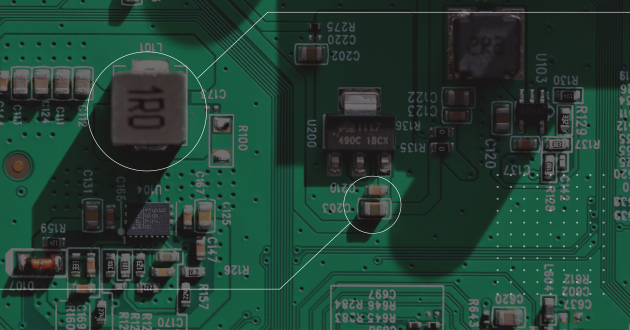Over the years, certain types of advanced semiconductors have emerged as critical to modern defense and intelligence systems, putting them at the forefront of the great power competition. As political tensions between the U.S. and China rise, access to these building blocks of modern computing becomes a matter of national security.
In 2022, the U.S. passed the CHIPS and Science Act, in an effort not only to control China’s access to advanced microchips and chipmaking tools, but also to fuel chip research and development domestically. The CHIPS Act’s extraterritorial controls have since persuaded U.S. allies, particularly those also involved in the manufacture of specialized chipmaking tools, to enter into multilateral trade agreements similarly designed to restrict Chinese access to advanced chips.
Because the chips used to train military systems are also the ones used in data processing centers and consumer products, these export controls will have a vast and enduring impact on U.S. supply chains across industries.
That’s why we turned to Chris Miller, respected economic historian and acclaimed author of Chip War: The Fight for the World’s Most Critical Technology. On a recent webinar, Global Trade Advisor Anne Marie Lacourse interviewed Miller on the key concerns for U.S. industries and the financial institutions touched by the semiconductor trade.
Their conversation offered many valuable insights to businesses looking to navigate new and emerging investment chip restrictions, but here are our top picks:
>> Learn more about the recent shift in the U.S. and Chinese semiconductor industries <<
1. The world’s most advanced semiconductor chips are dual-use
While the U.S. government’s interest in imposing export controls on semiconductors is rooted in a desire to stop the Chinese military from constructing advanced military technology, there are additionally widespread civilian applications for these same chips — and that’s part of the challenge of regulating them.
According to Miller, the specific semiconductor chips that the government is concerned with for military usage are Graphics Processor Unit (GPU) chips. “These are the most advanced pieces of manufacturing that humans have ever invented,” said Miller. “They’re capable of manipulating materials like silicon at almost the atomic level.”
GPU chips are used for training artificial intelligence (AI); and in military applications, this can help create advanced autonomous weapons. They’re also the exact types of chips and servers that are needed to train the AI for self-driving cars for civilians.
2. A workaround for Chinese civilian companies exists
U.S. regulations are broad and far reaching, but civilian Chinese firms are purposely left out of export controls. Miller said that private Chinese companies are free to access American chips, so long as they do so outside of China. Companies can bring their data to places like Tokyo or Singapore and utilize advanced chips to train their data for civilian purposes. The chips cannot enter China, where the U.S. would have less visibility into their usage.
However, Miller explains that this puts a major decision before the Chinese government. Authorities will need to decide whether they will allow Chinese companies to take their data outside of the country, as this could pose data protection and security issues. Miller said it’s still unclear what China’s response to these U.S. regulations will be.
3. The Netherlands and Japan form a broader approach to China
Currently, the U.S., Japan, and the Netherlands are the only three countries that make the tools needed to manufacture cutting-edge chips. Recent export controls are focused on ensuring China cannot access the chipmaking tools they would need to go beyond the basic chips they currently manufacture.
To ensure this, the U.S. asked Japan and the Netherlands to replicate its export controls program. After negotiations, both countries followed suit. According to Miller, this wasn’t a big ask as these two countries had already begun to shift their approach to relations with China. For example, the Netherlands listed China alongside Russia in its latest report on national security concerns. Additionally, Japan has significantly increased its defense spending in response to new developments in its relationship with China.
4. Uncertainty remains in China
Because the restrictions were first imposed recently, Miller thinks there’s still some uncertainty in China around how strictly they will be enforced. His own personal sense is that they’ll be enforced pretty strictly, if you look at what the U.S. government, the Japanese government, the Dutch government have been saying.
The second piece of uncertainty is how quickly China will be able to domestically produce some of the tools and software it’s being denied. What appears to be the consensus view in the industry, is that it won’t be easy to replicate the types of tools in question because they are extraordinarily complex. Some of these chipmaking tools involve components like the flattest mirrors ever made in human history or the strongest lasers ever deployed in commercial devices. These are really unique types of machinery capable of moving materials at the atomic level and can’t be easily or straightforwardly replicated.
Miller senses that Chinese firms are certainly going to try to replicate them but that it’ll take some time. Some in China are more optimistic about the country’s ability to replicate these tools and therefore find ways around the controls, but he thinks that’s probably going to be more difficult than expected.
5. Other industries should stay abreast of semiconductor export controls
The semiconductor industry won’t be the only affected industry and the export controls have the potential to affect a greater array of industries. He said any industry with a heavy reliance on data processing – including biotech, automotive, and many others – will likely feel the effects.
One example he cited was electric cars. These vehicles rely heavily on chips, and China is a major exporter of these cars, on top of being the largest global exporter of vehicles in general. The cloud computing industry also finds itself in the middle of this debate because its data centers make heavy use of GPU chips.
While these industries may not be directly implicated in the export legislation as currently written, Miller suspects they will feel the effects indirectly.
6. Self-sufficiency is not necessarily the goal
The U.S. produces around 10% of the world’s chips today, but the chip industry is extraordinarily internationalized with chipmaking in Taiwan, Korea, China, Japan, Europe, and increasingly in India. That means many types of devices will contain chips made in many different countries. And so not a single country can become self-sufficient in semiconductors over any reasonable time horizon without spending trillions and trillions of dollars to do so, though the U.S. could come closest, says Miller.
He doesn’t believe the CHIPS Act is actually intended to provide for self-sufficiency. He thinks the goal is to reduce the incentive that exists today to open new chipmaking facilities offshore. It’s currently more expensive to build chips in the U.S. than to build them offshore for a variety of reasons, but tax policy and incentives are part of that reason. And so the CHIPS Act is intended to reverse that dynamic and make it slightly more attractive to build chipmaking facilities in the United States.
The CHIPS Act’s second aim is allocating money to chip industry R&D efforts. Every single year, there are major technological advances that keep Moore’s Law alive, and investments in R&D are absolutely critical to that. Miller guesses that when we look back in 15 or 20 years at the CHIPS Act, we’ll find that the most impactful part of the spending was actually not the manufacturing incentives, but the R&D.
To hear more of Chris MIller’s insights on the wave of changes that could result from new semiconductor export controls, watch our extended interview here.



